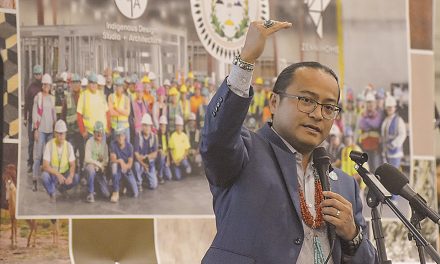
50 Years Ago: Tribe eyes record-breaking budget
The Navajo Tribal Council was making plans to meet to approve a budget that would take effect on July 1. And for the first time in its history, the Council was looking at a budget that would exceed $15 million. This $15.2 million budget would be some $1.6 million higher than the 1968-69 fiscal year and Raymond Nakai said he couldn’t be more pleased seeing more money to provide services to the Navajo people.
You could tell that an election was approaching by the fact that the Council was looking at all kinds of increases that would mean more money to the 92 chapters as well as more funds for tribal scholarships and housing. The tribe was also looking at a 10 percent raise for all tribal employees.
The big question on the minds of officials for the Navajo Area BIA was whether the tribal government would have enough revenue coming in during the year to pay for those increases since, by federal law, the Council had to approve a balanced budget. BIA officials pointed out that the tribe was having a hard time bringing in enough money to pay for the current year’s expenses. So where did the tribe expect to get the extra $1.6 million?
In fact, the best estimate that BIA officials could come up with was a revenue stream of about $14 million, which would mean the tribe would come up short by some $1.2 million. Nakai told BIA officials not to worry since the tribal government would be making an announcement soon that would net the tribe more than a million dollars more in revenue for the coming year. BIA officials, however, questioned Nakai’s statement pointing out that the BIA was a part of every ongoing discussion over increased revenue and they knew of no pending negotiations that would bring in that kind of money.
So Nakai and members of the Council were warned. If the Council approved a budget that would result in the tribe going into the red for next year, it would be rejected by the BIA.
In other news, Navajo Times editor Dick Hardwick did a column about Perry Allen, who was well known in the tribal government for being a hard worker and a fighter for improving the government. As he got older, he got around in a wheelchair but that didn’t keep him back. He was known for getting to work early and staying until most people had gone home for the day. But on this day in 1969, he was being honored with a Purple Heart from the Marines for being wounded in the invasion of Saipan. “I’ve been expecting this for 25 years,” said Allen as he proudly wore the pin on his lapel.
A machine gunner for the 4th Marine Division, Allen had received a wound to his hand during the July 23, 1944, battle. After Saipan, Allen fought in the battle of Iwo Jima, which was even bloodier. Allen came out of it without a scratch. Hardwick said he was glad to see Perry back at work in his tribal office after a long illness. Over the past couple of months, the Navajo people had been seeing article after article about the fight between Ted Mitchell, the director of DNA, and the tribal government, which wanted him removed. But one thing that made it difficult to get rid of him was the fact that a lot of Navajos — one could say with some confidence, the vast majority of Navajos — were on Mitchell’s side in the dispute.
Take Marlene Shondee of Ganado. She wrote a long and passionate letter to the Navajo Times supporting Mitchell and sharply criticizing the tribal government for trying to get rid of him. “If the chairman and members of the Council were doing a job as good as he has been, there would be no opposition,” she said, adding that the Navajo people want to know if the tribal government was doing the right thing by trying to get rid of Mitchell. “This personal fight is really affecting the Navajo people,” she said, “whether anyone realizes it or not.”
And finally, Hardwick talked in his column about the Whiteriver Apaches and their efforts to honor members who died in the service of their country. This month they unveiled a monument that listed the name of every member of the tribe who died in service. Hardwick wondered why the Navajos could not do the same. He also wondered why the tribe continued to ignore past promises to create a military cemetery on the reservation.
There was no excuse for tribal leaders to continue making promises to honor Navajo warriors who died and then after the election season was over, to just forget about it.
Police report








 Highway 264,
Highway 264, I-40, WB @ Winslow
I-40, WB @ Winslow